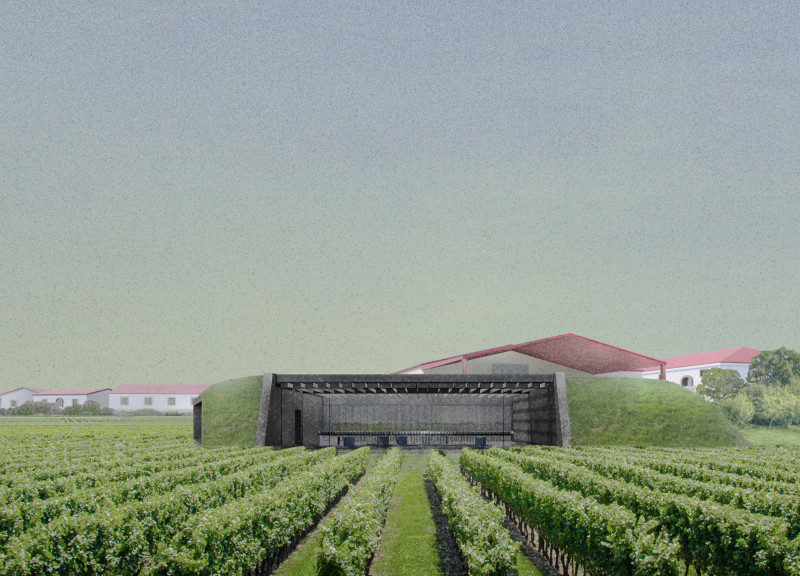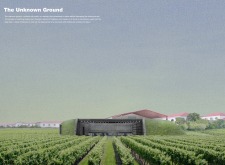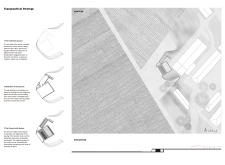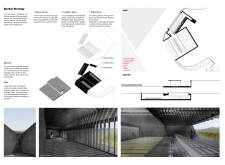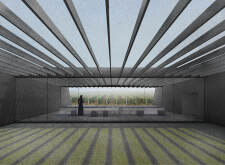5 key facts about this project
The Unknown Ground is an architectural design that connects wine tasting with the natural landscape. Located near a winery and a village, the setting takes advantage of the surrounding terrain to enhance the experience. The design focuses on creating a space that invites visitors to step away from their daily routines and immerse themselves in the interplay between nature and wine.
Topographical Integration
The site embraces its existing terrain in a way that engages visitors at various levels. The layout features two sides bordering the winery and village, while the other two sides open up to expansive natural areas. This thoughtful arrangement offers views that draw people into the landscape. A gradual approach guides visitors from the brightness of the village into an atmosphere that becomes darker and more introspective, marking a significant transition as they enter the tasting area.
Spatial Organization
Inside, the building consists of three connected spaces: an approach area, a transition space, and the main tasting room. The approach area includes a narrow staircase that leads down, creating a sense of movement and discovery. This transition from a familiar to an unfamiliar space will prompt visitors to engage with their surroundings. The transition space is designed to be functional, with areas that serve guests while awakening their senses. Unique textures and interesting lighting create an environment that encourages contemplation.
Tasting Room Experience
The tasting room is the centerpiece of the design, opening toward the vineyards and courtyard. This orientation allows for clear views of the surrounding landscape, fostering a welcoming setting for wine enjoyment. Natural light flows into the room, changing the atmosphere at different times of the day. Visitors can connect with both the wine and the land it comes from, deepening their overall experience of the tasting.
Material Consideration
Material choices are essential in this design, contributing to the connection with the environment. The use of black concrete and dark wooden louvers creates a backdrop for the vibrant natural landscape. The louvers play a functional role, allowing for variations in light that enhance the ambiance inside the tasting room.
The design encourages visitors to look outside, merging indoor and outdoor experiences. This connection brings the beauty of the vineyards inside, allowing for a quiet and thoughtful wine tasting experience.


